Electric Vehicles: V2L, V2G, V2H …WTF is “bi-directional charging”?
By Finn Peacock
Chartered Electrical Engineer, ex-CSIRO, Founder of SolarQuotes – and EV owner.
Last Updated: 5th Aug 2025
The rise of electric vehicles has seen all sorts of technology and jargon spring forth; including the acronyms V2L, V2H and V2G. Here’s what it all means, how these EV technologies relate to home solar power and how they may benefit you.
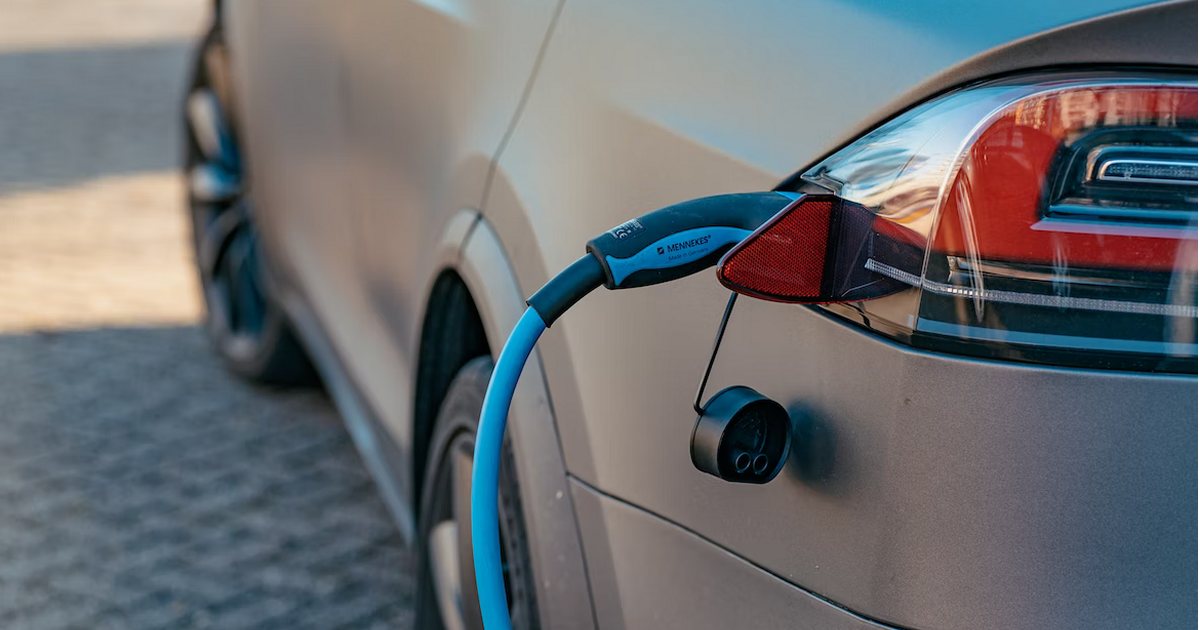
Electric cars are big batteries on wheels with the potential to do much more than just power the vehicle.
All EVs can take energy from a charger, but some can also push their stored energy out, powering external appliances or your home. With special software, some cars can even take part in Virtual Power Plants, pushing energy into the grid when asked to.
This is often called ‘bi-directional charging’, and you’ll need a special charger on your wall to do it.
There are a number of acronyms that describe this two-way energy flow, and it can get mighty confusing. Here’s what you need to know to understand bi-directional charging.
V2X
V2X stands for Vehicle-to-Everything, an umbrella term for all forms of bidirectional energy transfer between an electric vehicle and external systems. This includes:
V2L Or VTOL
V2L stands for Vehicle To Load. The general concept is simple.
The vehicle may have a standard power socket built in:
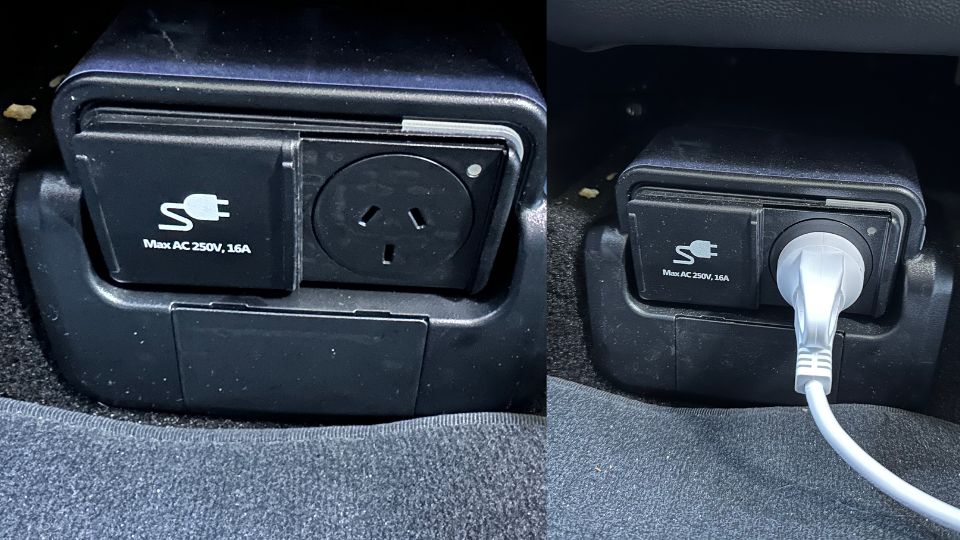
The Hyundai Ioniq 5 has a 250V, 16A power point under the middle backseat.
Or the car may have a special V2L adaptor or cable with a standard EV charging plug at one end and a standard power socket or power board at the other.
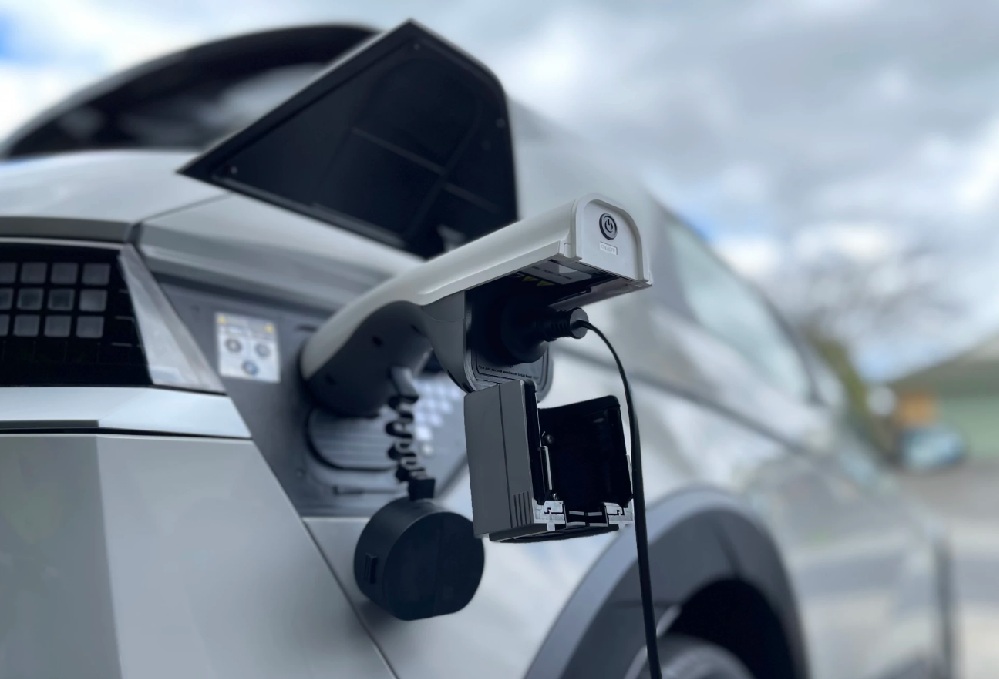
A V2L adapter. Image Credit: Hyundai NZ
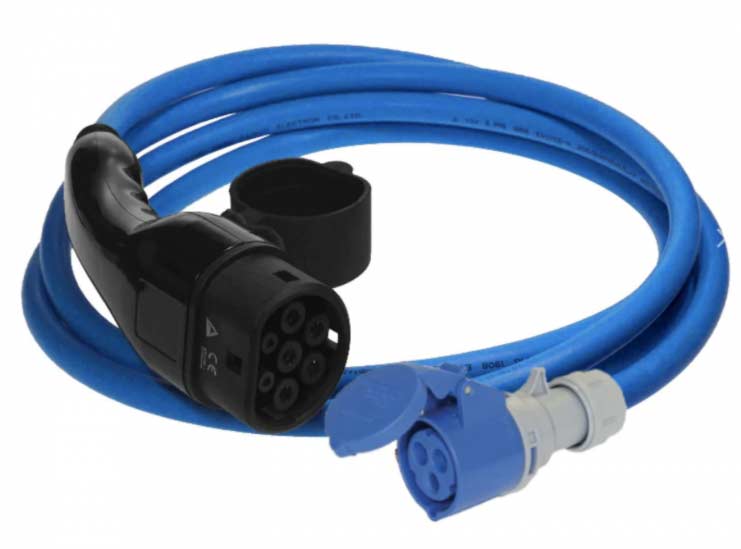
A V2L Cable for an MG ZS. (European power socket shown)
You can plug various household appliances into the socket and they will be powered by your car. Espresso in the carpark? No problem.
Aside from the EV being able to support V2L, no other equipment is required.
An example of an EV with V2L capabilities is the BYD Atto 3, which offers up to 3.3kW peak output and continuous output of 2.2kW. This is enough to run appliances including a fridge, lighting, notebook computers or even some higher draw appliances such as a kettle.
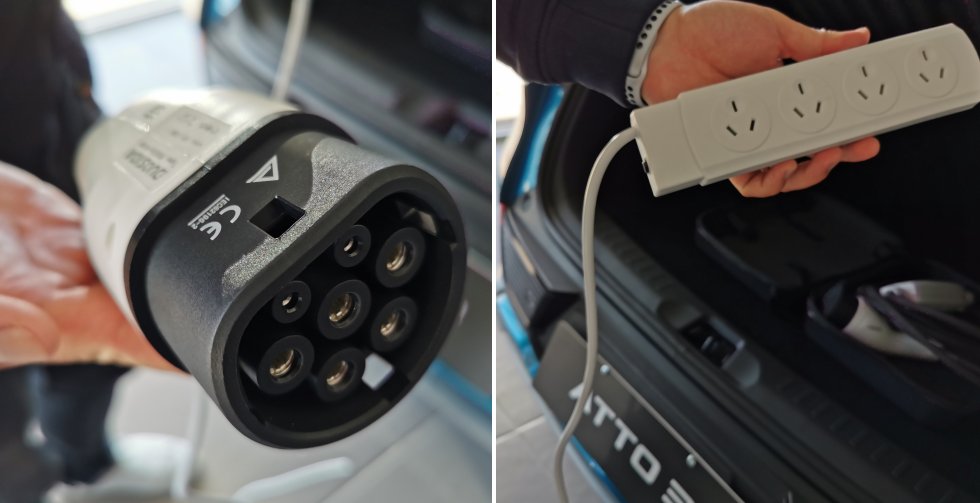
The business ends of a BYD Atto 3 V2L cable
The Atto 3 Extended has a 60 kWh battery, so it’s like having four Tesla Powerwall home batteries (and then some).
But only a bit.
V2L has limited functionality
Advanced home batteries such as Tesla Powerwall have a bunch of other tricks up their sleeves besides more power (kW) output that V2L won’t provide. For example, a Tesla Powerwall is tied in with the home’s electricity supply and can continue to be charged by rooftop solar panels during a blackout. This is called Level 3 backup capability.
With V2L, you’ll need to manually connect critical loads (within the car’s capability) to the V2L cable power board when a blackout hits.
Note: spending extra bucks on a backup switchboard and an AC transfer switch for your home (plus an inlet and compatible cable) to power those loads might not work. You could strike issues with your home’s MEN (Multiple Earthed Neutral), resulting in the RCD in your vehicle tripping. Some have reported MEN workarounds, but depending on their nature these additional modifications could fall afoul of electrical regulations.
Whatever energy you have in the car battery is all you’ll have to work with during a blackout event – and this includes solar owners. Because a solar power system will be out of action for the duration of the event (due to an important safety feature called anti-islanding), you won’t have the means to charge the EV battery from your panels.
Still, V2L could be a very handy feature to have in a pinch – one that could help you get through an extended blackout. In the case of the Atto 3, you could power loads such as a fridge, lighting, fans, a notebook computer and handheld devices for more than a week. While it won’t be luxurious living, you’ll be better off than those without it.
Assuming you’ve started with a close to full battery, you should still have plenty of juice to escape the city by the end of that week. If suburbia is still blacked out after that time, you’ll need it as your once-friendly neighbours or marauding gangs are probably about to forcibly acquire your home (and car).
Other pure-play electric vehicles with V2L capabilities available in Australia (or will be soon) include the Genesis GV60 and Electrified GV70/G80, Hyundai Ioniq 5, Kia EV6 and Niro EV, and MG ZS EV.
Tip: Manufacturers offering V2L capability advise not to use it if the car has a low charge. In the Atto’s case, BYD says that’s below 15%.
V2G – Vehicle To Grid
V2G enables an electric car to discharge to the grid via a bi-directional charger (more on bi-directional chargers below).
There may be some serious bucks to be made with V2G for EV owners. During times of high electricity demand, such as the evenings and particularly during summer, wholesale electricity prices can go through the roof. Through participation in a Virtual Power Plant (VPP) or other arrangement, EV owners could take advantage of this by exporting from their cars to the grid and being paid *much* more than standard feed-in tariffs for providing this service.
The other grid service V2G can provide is soaking up solar energy goodness when surplus in the grid is reaching a point it threatens grid stability. You could potentially be paid to charge your EV, although that doesn’t require a bi-directional charger.
Strictly speaking, V2G is not about powering your home – although it has become an umbrella term including that functionality. And given V2G is not grid-forming, during a blackout you’ll still be in the dark with or without solar panels (unless you have a suitable home battery).
While the number of fully electric vehicles with V2G capabilities available in Australia right now is limited, it is growing, and will continue to do so. Minister for Climate Change and Energy Chris Bowen reckons regulation for V2G will be in place, “as early as Christmas this year.“
V2H – Vehicle To Home
V2H is where things get really interesting, depending on your focus. V2H is Vehicle To Home, sometimes referred to as V2B (Vehicle To Building). The technology lets you use your EV as a (very big) home battery system via a bi-directional charger (again, see below) and an energy meter.
For some households, having an EV with V2H capabilities will do away with the need or desire to have a home battery – just use the car. This will most likely be the case where the car is at home most of the day, and the house has a rooftop solar power system.
V2H can be grid-forming, meaning it can operate when the grid is down and rooftop solar panels will continue to charge the EV. But backup capability depends on the bidirectional charger used.
When you consider the capacities of electric vehicle batteries and depending on a household’s energy consumption profile, V2H may turn out to be a much cheaper and more practical way of approaching home energy storage. Compared to home battery system pricing, kilowatt-hour for kilowatt-hour, it could be like paying for the EV battery and getting the rest of the car thrown in for free.
The only fully electric vehicle boasting V2H support in Australia currently is the Nissan Leaf Gen 2.
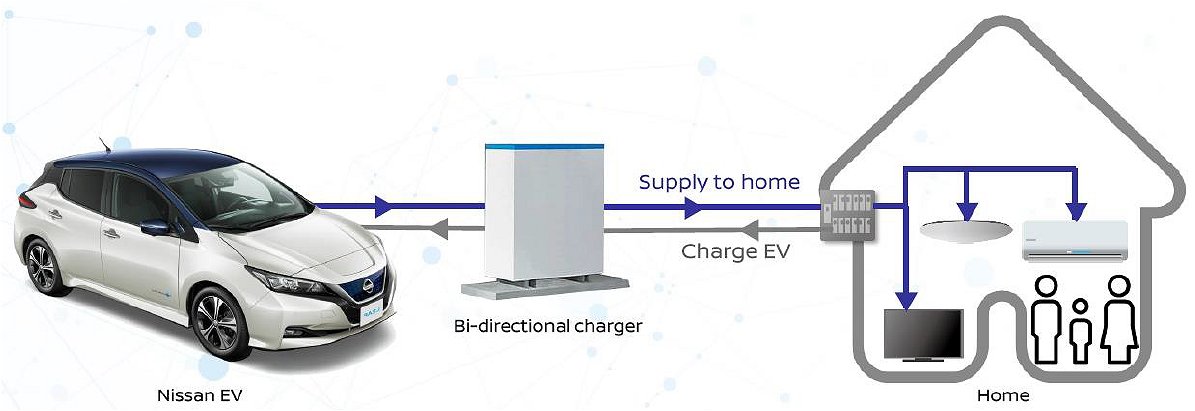
Image: Nissan
Trivia: Nissan introduced V2H capabilities in 2012 in Japan.
About Bi-Directional Chargers
As mentioned, V2H and V2G functionality must be supported by the vehicle *and* used in conjunction with an energy meter and bi-directional charger.
Conventional EV chargers only operate one-way – from the charging source to the EV. But bi-directional chargers operate from the charging source to the EV and from the EV to the grid and/or house; converting AC to DC during charging and DC to AC during discharging.
At the time of writing, bi-directional chargers are as rare as rocking-horse poo in Australian and dear as poison – the only EV charger capable of bi-directional charging is the SigenStor DC EV charger module, which costs $8,600 before installation. Just as a comparison, a standard EV charger costs $800 – $2000, not including installation. But as more companies start manufacturing bi-directional chargers, their cost is expected to drop dramatically and quite quickly.
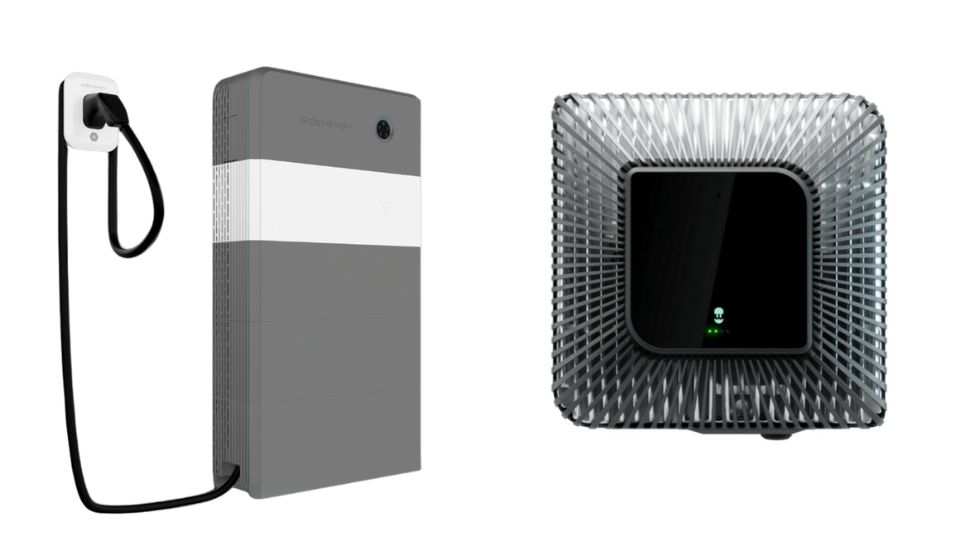
Examples of bi-directional chargers: the SigenStor DC EV charging unit on the left and the Wallbox Quasar (which has been discontinued) on the right.
Something else that needs to happen is the regulatory green lights for V2H and V2G at a national level and from Distributed Network Service Providers (DNSPs) in various Australian states and territories. Unlike EV technology advances, the wheels can turn very slowly when it comes to red tape.
But in South Australia, SA Power Networks is leading the way. I visited a winery in the Barossa Valley that has, to the best of my knowledge, the first V2G bi-directional charger installed at a residential or commercial property in Australia. The following video reveals what I discovered; including what it all costs, specifications, battery warranty implications – and limitations.
Tip: Don’t assume a bi-directional charger (or EV) has both V2H and V2G capabilities – or either. Or even V2L functionality in terms of cars. For example, Tesla electric vehicles do not support V2L, V2H or V2G currently. It seems Elon Musk really wants you to buy a pricey Powerwall.
Warranty Considerations
EV makers may be fussy about what bi-directional chargers will be permitted for use with their cars while under warranty. For example, while Nissan has had V2H tech in the Leaf for over a decade, it was only in the second half of 2022 the company gave the nod to an “official” compatible bi-directional charger capable of V2H and V2G.
As well as keeping EV warranty in terms of chargers in mind, you should also take a close look at an electric vehicle’s warranty to determine how utilising V2, V2H or V2G may affect it.
V2L, V2H, V2G And Battery Degradation
Lithium-ion batteries degrade over time – it’s just their nature – and some faster than others. But EV battery manufacturers have had a great deal of practice in building vehicle energy storage that lasts; more so than those manufacturing home batteries.
As well as battery pack quality, how much of an impact using V2L, V2H or V2G will have on battery life will depend on how hard, how long and how often you (or the grid) hammer it. As mentioned, the good news is kWh for kWh, EV batteries are already far cheaper than home battery storage – and that trend will likely continue for the foreseeable future.
By the time a new EV purchased today will need its battery pack replaced, it should be a cheap exercise compared to replacing a home battery (again, kWh for kWh). And a home battery won’t get you to the supermarket, your place of work, favorite camping site, or tow your boat/trailer.
So, in summary, there’s even more to be excited about regarding Australia’s EV future – particularly V2H; but you’ll still need to be patient before all the stars align.
Get Ready For V2H – Get Solar Now
If the prospect and potential of V2H has you rethinking home batteries or putting off an EV purchase, fair enough. But don’t rethink getting solar panels in preparation if you haven’t done so already. Every day you’re without a solar power system is another day you’re locked into electricity bills far higher than they would otherwise be.
Learn more about home solar and electric cars; or if you’re ready to pull the trigger on a PV installation – get solar quotes (and/or EV charger quotes) from installers I trust.